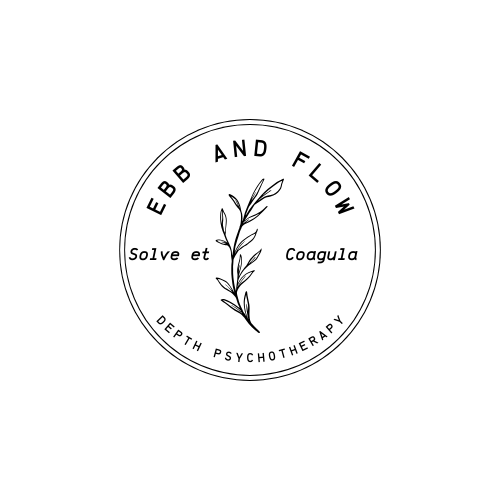My Spiritual Experience with a Medicine Ball
Michael Ebbinghaus • September 6, 2023
Cosmic Union is Just a "Playout" Away

I’m feeling good, in tune with my body. A pain in my calf had me take a new approach. I move to the open floor space and gather a heavy kettlebell and medicine ball to me. I love the feeling of the weight, of the natural coordination of my body. To be able to shift such weight with grace is something that fills me with immense joy.
I set to work and enter the flow. As I lift the medicine ball over my shoulder again and again, I have the feeling I could do this all day. I exchange it for its heaviest brother. Something happens to me over the next set, a shift in my awareness. I’m in the beingness now, ego artfully in union with the space around it. I imagine it is how a satisfied parent must feel, or of looking out over creation with a glimmer of pride and joy.
The language of “working out” and other fitness related self-improvement activities is saturated with the language of conflict and duality. Often there is the reification of an actual battle or war, sometimes against an articulated feeble self. Joe Rogan sums this up nicely in his statement “Conquer the inner bitch.” It stands to reason that if it is indeed such a bitch, why are we involved in such extraordinary conflict to conquer it?
My approach to working out and fitness differs greatly from when I began as an adolescent and progressed as a young adult. While I didn’t have the sense of conquering weakness, I was very much infatuated with my ability to push, to grow, to throw the weight around. Me vs. the weight. Now my workouts could be said to be more of “playouts,” relying more on dynamic shifts in my body and movement to emerge. I know the perfect workout lays therein. It does not ask me to abandon my senses, knowledge, or tradition, but rather exercise them to their fullest extent and relax them entirely when appropriate.
"It stands to reason that if it is indeed such a bitch, why are we involved in such extraordinary conflict to conquer it?"
As I began to repeat the exercise with the heavier ball, I felt it come into me. I felt its weight become my weight, and seamlessly I moved a single body. I could feel the delight of the ball in being thrown like a child. “Weeeee!” it would exclaim. But more prevalent was that feeling that our weight was one, and there was this beautiful dance of coming together and launching apart, then joining together.
Taoist psychologist Arnold Mindell speaks of the flirtation of objects, how certain objects “flirt” with our attention. This is in contrast to the more prevalent notion that we are sole arbiters of our attention, and that we are egos encapsulated in a bag of skin acting on a world which is "out there." Experiments in playing with this mode of awareness have yielded interesting fruit for me and for many others.
The great criticism often made is that this notion or state of consciousness is not practical, and that such experiments into subjective awareness cannot be repeated except under certain circumstances. Ultimately, it cannot be trusted. To be able to relax into this mode of consciousness is not something we are trained to understand. We are, rather, instructed in the opposite, in devoting great energy to thinking. We think that we have got to think all the time. From that place of cognitive obsession, the psychological undercurrents, or what Mindell refers to as “the dreaming,” are not easily perceptible. One must be able to witness it, then they can come to their own conclusions.
"Weeeee!" - 50 lb medicine ball at Crux
That it is impractical, however, is entirely without merit. The fact that we are looking for there to be purpose in relaxation is to utterly miss the point, but of course it has benefits to our health and well-being, which in turn tends to make us more productive and fulfilled human beings. However, using this simple example of entering into union with an object, we can see the practical implications at play. Because I am not at war within myself, because it is not me vs. inner bitch me or me vs. the medicine ball, but just energy existing as two entities coming together and separating, it does not become a task to be completed but a play to be engaged in. Therefore, I spend more time doing the exercise, I’m able to expand further into my ability while being fully aware of my body, and the movement is integrated. By integrated I mean that it is a compound and natural movement, not a rigid exercise isolating a muscle group. It can be said, therefore, that “playing out” as opposed to “working out” is more effective in producing the results that working out aims for.
And such is the story of many a neurotic or ill Westerner.
It is also important to highlight the lightness of this experience and compare it to the spiritual exhibitionism that is so common in our day and place. Many of us have encountered this phenomenon, and certainly I love to weave a tale around my most extraordinary experiences, but after awhile I find these things to be draining. We, on the whole, take things so seriously, and so miss out on many opportunities for joy in seemingly mundane circumstances.
The desire to be good or compassionate is referred to as the golden chain in spiritual tradition, as opposed to the iron chain of the flesh. It is just as effective as any other identity in keeping us out of the present moment and within the narrower tunnel of our conceptions. We confabulate as to how our mode is more effective, but the truth is that the proper balance of analysis and surrender brings about our highest potential, not just in terms of productive output, but in a felt-sense of presence and well-being.


